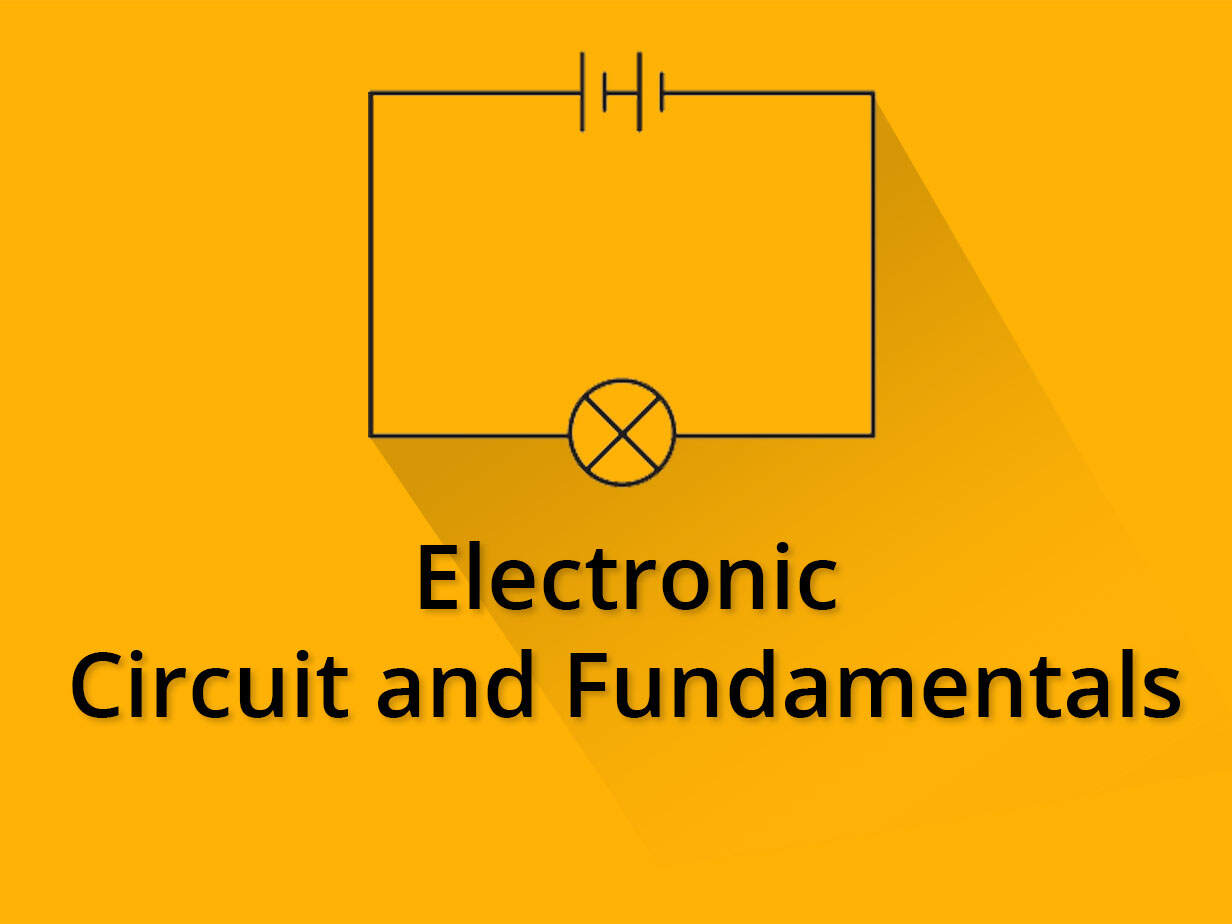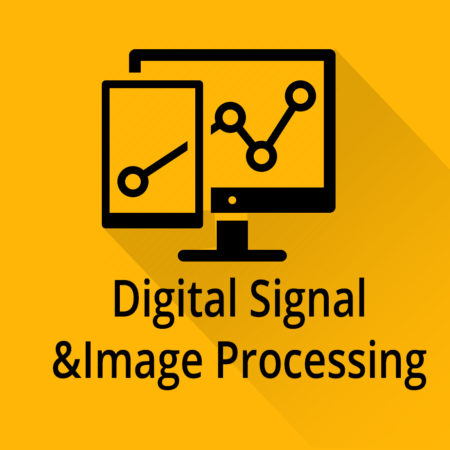ECCF ( Electric circuit and Communication Fundamentals )

-
Description
What you’ll Learn:
Develop the knowledge of semiconductor devices and circuits
Inculcate circuit analysis capabilities
Gaining knowledge in electronic devices and circuits that is useful in real life applications.
Description:
This course helps understand the use of semiconductor devices in circuits and analyze them along with the importance of oscillators, power amplifiers in communication systems. Learn the basics of Op-Amp (Operational Amplifier) and it various types and applications.
Join in to learn Electronic Circuits and Communication Fundamentals, equally important from the academic as well as real-world knowledge.
Modules Covered:
Electronic Circuits:Bipolar junction transistor.
Power Amplifiers:
Electronic Circuits : Operational Amplifier and its applications
Communication Fundamentals: Analog Communication
Pulse Modulation and Multiplexing.
Communication Fundamentals: Information theory. -
Introduction to ECCF
- How To Pass ECCF
- Introduction to ECCF
- JFET
- BJT
- BJT Biasing Techniques
- Op-amp
- inverting adder and inverting subtracter
- Virtual ground and virtual short
- Op-amp Differentiator
- Op-amp Comparator
- Op-amp Integrator
- Power Amplifier
- Oscillator basics
- Analog Communication
- Amplitude modulation
- Angle Modulation FM
- Diode ring Modulator
- DSB SC Signal
- FM generation by armstrong method
- Generation of SSB signal
- Analog Pulse Modulation part 1
- Analog Pulse Modulation part 2
- Sampling process
- Super hytrodyne Reciever
- Digital Pulse Modulation
- Quantization Process
ECCF (Electronic Circuits and Communication Fundamentals)
Akshay Patel
What you’ll Learn:
-
Develop the knowledge of semiconductor devices and circuits
-
Inculcate circuit analysis capabilities
-
Gaining knowledge in electronic devices and circuits that is useful in real life applications.
Description:
Electronic Circuits and Communication Fundamentals is the semester 3 subject of computer engineering in Mumbai University. Prerequisite for studying this subject is Basic electrical engineering. Course Objectives of the subject Electronic Circuits and Communication Fundamentals is to develop the knowledge of semiconductor devices and circuits, and explain their use in communication applications. To inculcate circuit analysis capabilities in students. To gain knowledge in electronic devices and circuits that is useful in real life applications. To understand the fundamental concepts of electronic communication and their use in computer applications. Course Outcomes of the subject Electronic Circuits and Communication Fundamentals At the end of the course student should be able. To understand the use of semiconductor devices in circuits and analyze them.To understand importance of oscillators and power amplifiers in communication system.To understand basic concepts of operational amplifier and their applications. To understand the fundamental concepts of electronic communication .To apply knowledge of electronic devices and circuits to communication applications. To study basic concepts of information theory.
An electronic circuit is composed of individual electronic components, such as resistors, transistors, capacitors, inductors and diodes, connected by conductive wires or traces through which electric current can flow. To be referred to as electronic, rather than electrical, generally at least one active component must be present. The combination of components and wires allows various simple and complex operations to be performed: signals can be amplified, computations can be performed, and data can be moved from one place to another. Circuits can be constructed of discrete components connected by individual pieces of wire, but today it is much more common to create interconnections by photolithographic techniques on a laminated substrate (a printed circuit board or PCB) and solder the components to these interconnections to create a finished circuit. In an integrated circuit or IC, the components and interconnections are formed on the same substrate, typically a semiconductor such as doped silicon or gallium arsenide. Communication is the act of conveying meanings from one entity or group to another through the use of mutually understood signs, symbols, and semiotic rules.
Module Electronic Circuits consists of the following subtopics Bipolar junction transistor. Input and Output characteristics, Types of Biasing – Fixed bias, self-bias, voltage divider bias, DC load line and significance, CE amplifier using re model, (Analysis based Numericals). Module Power Amplifiers consists of the following subtopics Introduction, Class A and Class C power amplifier. Oscillators: Introduction, Barkhausen criteria, Colpitts oscillator and Crystal oscillator. Module Electronic Circuits consists of the following subtopics Operational Amplifier and its applications Op-amp block diagram, parameters and characteristics, applications Inverting and Non inverting amplifier, Summing Amplifier(Numerical), Difference amplifier, Basic Integrator and Differentiator, Comparator, Zero Crossing Detector.
Module Communication Fundamentals consists of the following subtopics Analog Communication Block diagram and elements of analog communication systems, Theory of amplitude modulation and types of AM (Numerical) Generation of DSB SC using diode based balanced modulator, Generation of SSB using phase shift method, Introduction of FM,and its mathematical representation, Statement of Carson‟s Rule Comparison of AM, FM, Block diagram of AM transmitter (HLM and LLM) Block diagram of AM Superheterodyne receiver. Module Pulse Modulation and Multiplexing consists of the following subtopics Statement of Sampling Theorem, Generation and detection of PAM, PWM, PPM, PCM, DM and ADM. Principle of TDM using PCM and FDM.Communication Fundamentals: Information theory. Amount of information, average information, information rate, Statement of Shannon’s theorem, channel capacity (Numericals).
Suggested texts books for the subject Electronic Circuits and Communication Fundamentals by Mumbai university is as follows Robert Boylestad, „Electronic Devices and circuit Theory‟, Prentice Hall. D Roy Choudhury, „ Linear integrated Circuits‟ New Age International Ltd. G. Kennedy, B. Davis, S R M Prasanna, „Electronic Communication Systems‟, McGraw Hill, 5th Edition. Wayne Tomasi, „Electronic Communication Systems (fundamentals through advanced)‟, Pearson Education, 4th Edition. K. Sam Shanmugam,‟ Digital and analog communication systems‟, Wiley. Suggested reference books for the subject Electronic Circuits and Communication Fundamentals by Mumbai university is as follows Donald Neamen, „Electronic Circuit Analysis and Design‟, Tata McGraw Hill,2nd Edition. K. R. Botkar, „Integrated Circuits‟, Khanna Publishers, 9th Edition Simon Haykin, „Digital Communication systems‟, Wiley. David Bell, „Electronic Devices and Circuits‟, Oxford, 5th Edition. Ramakant A. Gayakwad, „Op-amp and linear integrated circuits‟, PHI, 3rd edition.
Join in to learn Electronic Circuits and Communication Fundamentals, equally important from the academic as well as real-world knowledge.
Modules Covered:
- Electronic Circuits:Bipolar junction transistor.
- Power Amplifiers:
- Electronic Circuits : Operational Amplifier and its applications
- Communication Fundamentals: Analog Communication
- Pulse Modulation and Multiplexing.
- Communication Fundamentals: Information theory.
Feel forward to have a look at course description and demo videos and we look forward to see you learning with us.
Prepare For Your Placements: https://lastmomenttuitions.com/courses/placement-preparation/
![]()
/ Youtube Channel: https://www.youtube.com/channel/UCGFNZxMqKLsqWERX_N2f08Q
Follow For Latest Updates, Study Tips & More Content!
Course Features
- Lectures 26
- Quizzes 0
- Duration 10 hours
- Skill level All levels
- Language hindi
- Students 1500
- Certificate No
- Assessments Yes
-
name.is.shubh
Nice
I loved this teaching. Its like you are my roommate n you are teaching a night before exam.
-
Shabaz
ECCF
Bro ur are a legend thanks a lot for this course

